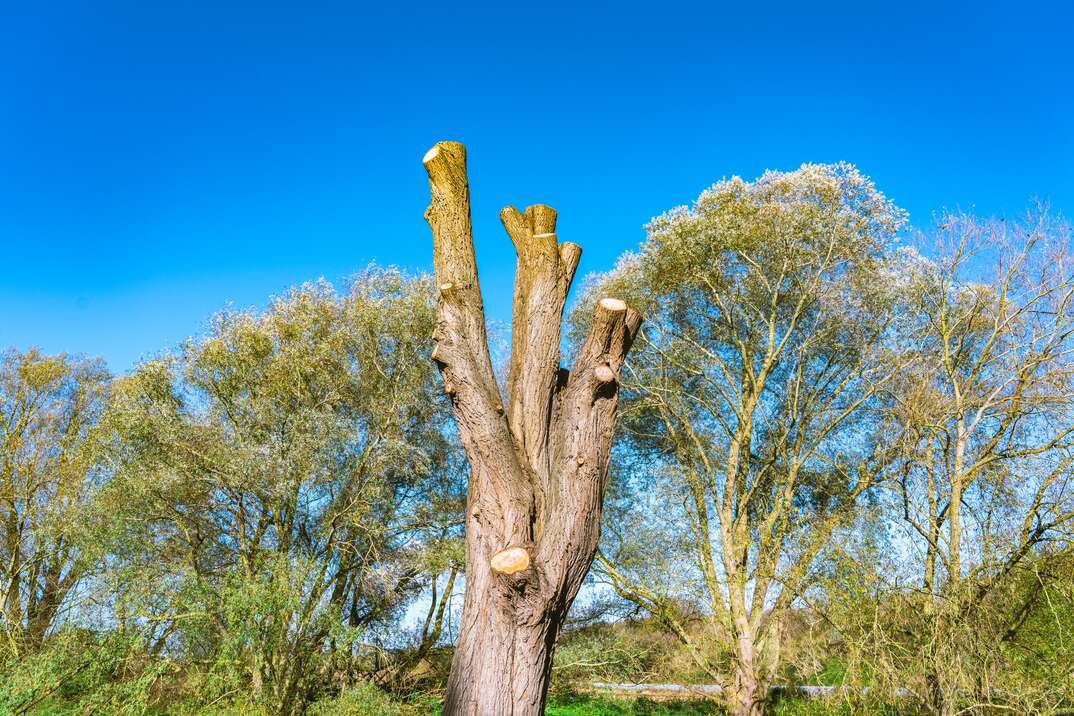What's Wrong With Tree Topping?

If you’re a homeowner considering tree topping, you might want to think twice before you reach out to an arborist for an appointment.
Most tree experts agree that topping isn’t just an obsolete, archaic and expensive practice for trees — it also mutilates trees and sets the stage for decay, disease, tree failure and tree death.
What Is Tree Topping?
The International Society of Arboriculture describes the practice of tree topping as the “indiscriminate cutting of tree branches to stubs.” If you observe a tree that looks as if someone gave it a bad crew cut, with unsightly stubs protruding from where leafy branches should be, you’ve seen a tree that's been topped in the past few years.
The antiquated practice of tree topping involves the drastic cutting back or removal of a mature tree’s largest branches, which dramatically alters the tree's natural shape. Tree care companies may call the outdated practice of tree topping by other names, including topping off, stubbing off, heading back, lopping or dehorning. Tree topping is not the same as trimming or pruning, which are generally beneficial for trees.
No matter how you look at it, tree topping is bad news for trees and property owners. There are several key reasons why topping a tree is never a good idea.
For starters, removing a large portion of the tree’s leaves hinders the process of photosynthesis, which the tree relies on to create its own food and thrive. Consequently, tree topping changes the tree’s hormonal structure, resulting in a proliferation of growth, and that's not a good thing for the tree.
When a tree is topped, it starts to rapidly develop new branches, giving rise to the misconception that tree topping benefits the tree. However, the small, spindly shoots that quickly sprout out as a result of topping are simply evidence of a distressed tree attempting self-preservation. The tree is trying to repair itself to get more food as fast as it can. Those weak little shoots are attached to vessels just below the bark and are highly susceptible to storm and wind damage.
The loss of foliage eventually leads to starvation of the tree. Trees that cannot efficiently produce the food they need become weaker, and so do their roots. This reduces the structural integrity of the tree and creates a hazard that can lead to liabilities and damage for property owners.
Perhaps equally as ominous, topping doesn’t just leave trees looking their absolute ugliest. It also leaves behind open wounds that open the tree up for rot and decay, as well as the invasion of insects, fungi and diseases.
Should You Hire an Arborist Who Recommends Tree Topping?
Probably not. Despite experts frowning on tree topping, some tree care companies consider tree topping an acceptable and even necessary practice. Well-meaning but often misinformed tree care companies may suggest that topping will rejuvenate the tree, but topping creates wounds that immediately start the tree on the road to decline.
It is also not true that topping a tree corrects storm damage, as some tree care companies purport. The reality is that topped trees become more susceptible to damage and breakage from future storms.
The Bottom Line
Trees are valuable assets for property owners, but they require proper maintenance and ongoing care. While trees can and often do survive topping, it’s not good for them and can cause a host of problems, up to and including shortening the lifespan of the tree and tree failure or death.
Elocal Editorial Content is for educational and entertainment purposes only. Editorial Content should not be used as a substitute for advice from a licensed professional in your state reviewing your issue. Systems, equipment, issues and circumstances vary. Follow the manufacturer's safety precautions. The opinions, beliefs and viewpoints expressed by the eLocal Editorial Team and other third-party content providers do not necessarily reflect the opinions, beliefs and viewpoints of eLocal or its affiliate companies. Use of the Blog is subject to the
Website Terms and Conditions.The eLocal Editorial Team operates independently of eLocal USA's marketing and sales decisions.



